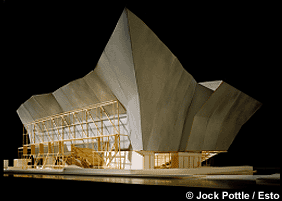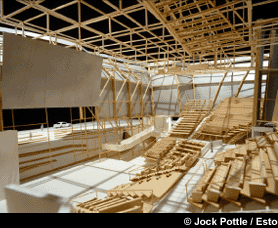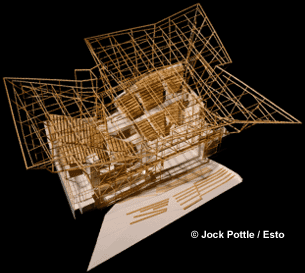 |
||

| |
CLIENT Time Warner |
LOCATION Los Angeles, California COST $18 Million USD |
| |
DESCRIPTION The award-winning design for Performance Theater 1999 was commissioned for a 1.5-acre site, currently a 150-car parking lot surrounded by movie studio back lots and the headquarters of a leading record company. The site is also in close proximity to a network of pedestrian and vehicular ramps - walkways, collector and arterial streets, a traffic interchange and a freeway - making it a juncture, so to speak, of Los Angeles' car and entertainment cultures. |
| The theater
itself, an 18,000
square-foot multimedia performance space for music, film and TV
productions, unfurls in asymmetrical, organic forms from a deep
underground base, or plinth. The plinth acts as the structure's
foundation in a literal and figurative sense: it incorporates the
theater's three-level parking garage - symbolically subsuming the
site's original function - and the programmatic roots of the entire
structure. The garage's ramps, which are in themselves abstracted
references to the freeway interchanges that define Los Angeles in the
popular imagination, spiral upward toward the surface like shoots from
a seed. |
| The vertical façade of
the
structure cants outward from the petals, appearing to defy gravity, and
unfolds at radically broken angles to the top edge. Functioning as a
theatrical curtain between the spectacle and the spectators, the
façade cloaks the infrastructure with a dynamic movement frozen
in time. Its bottom edges flit at off-angles to the structural steel
frame of the ground floor and the hard petals supporting the interior
seating blocks, and its vertical planes part in a kind of a slip space
just above the entrance. |


